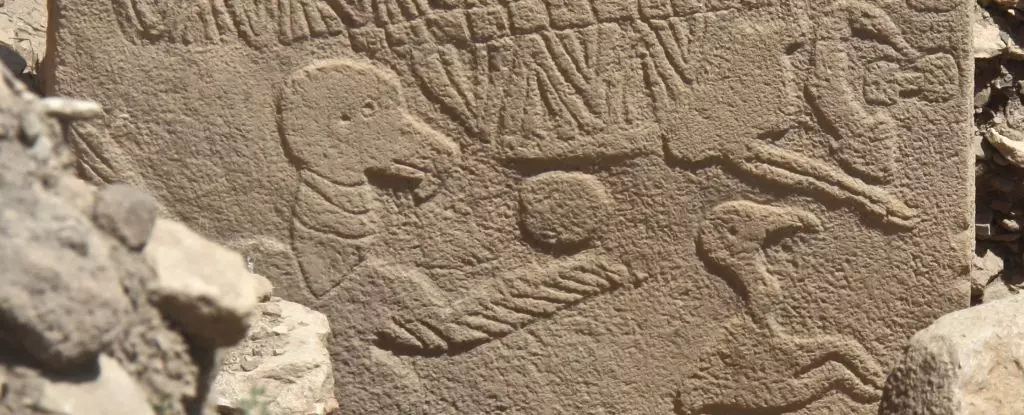The ancient monument of Göbekli Tepe in Türkiye continues to amaze archaeologists and researchers with its intricate carvings and structures. Dating back over 10,000 years, this temple complex is considered the oldest of its kind, shedding light on the practices and beliefs of a people long gone. Recent findings have uncovered a fascinating discovery – a carving on a wall within the complex that could be the earliest evidence of a calendar used to track time and seasonal changes.
At the heart of this discovery lies the Vulture Stone, a carved pillar adorned with a bird figure and stylized patterns. Researchers, led by chemical engineer Martin Sweatman, have delved into the symbolism and significance of this pillar, suggesting that it may represent constellations and even record ancient cosmic events. Sweatman’s analysis extends to the V-shaped marks found on other pillars at Göbekli Tepe, proposing that these markings could symbolize days, hinting at a sophisticated system of timekeeping by the ancient inhabitants.
Further examination of the carvings at Göbekli Tepe reveals a possible connection to celestial events such as the summer solstice and the Taurid meteor shower. Sweatman’s research points to a correlation between the symbols on the pillars and Earth’s precession, offering insights into how the ancients may have observed and interpreted the movement of the stars and planets. The intricate details and alignments found in these carvings suggest a deep understanding of astronomy and its role in shaping the lives of the Neolithic people.
While Sweatman’s findings have sparked debate among archaeologists working at Göbekli Tepe, the comprehensive analysis presented raises intriguing questions about the sophistication of ancient civilizations. The proposed link between a comet impact and the development of early religions and agricultural practices underscores the potential impact of cosmic events on human history. As the research community continues to investigate and debate these discoveries, the legacy of Göbekli Tepe as a center of ancient knowledge and innovation only grows more profound.
The study of Göbekli Tepe and its enigmatic carvings offers a glimpse into the minds of our distant ancestors, revealing a profound connection to the celestial realm. The intricate calendar system proposed by Sweatman and his team highlights the ingenuity and sophistication of the Neolithic people, challenging our perceptions of ancient societies. As we unravel the mysteries of this ancient site, we are reminded of the enduring legacy of human curiosity and the timeless quest to understand the universe around us.
The ancient monument of Göbekli Tepe continues to captivate and inspire, offering a window into a world long past yet rich in knowledge and wisdom. As we unravel the secrets hidden within its carvings and structures, we are reminded of the ingenuity and creativity of our ancestors, whose enduring legacy echoes through the ages. The exploration of Göbekli Tepe serves as a testament to the enduring human spirit and our timeless pursuit of understanding the world around us.


Leave a Reply